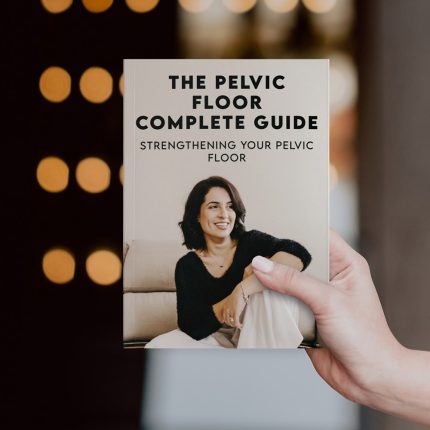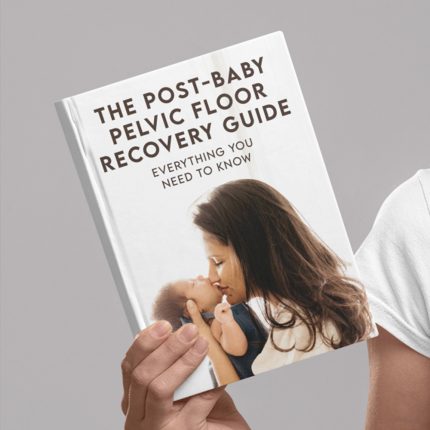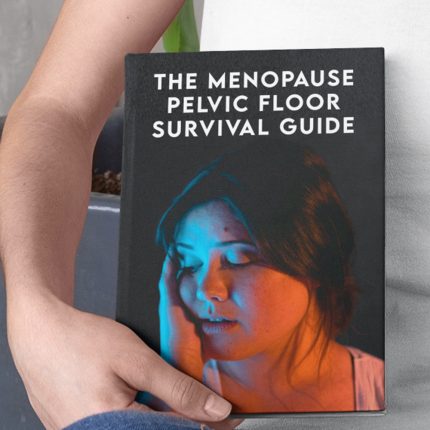Ever wondered what secret superhero is quietly holding you together, literally? Imagine a team of muscles working behind the scenes, keeping you balanced, confident, and ready to rock every spontaneous adventure life throws your way. Welcome to the world of pelvic floor basics! Forget what you thought you knew about workouts and wellness; this guide is about to show you that caring for your pelvic floor is not only smart self-care but also a game-changing move for your overall vibe. Whether you’re a Gen-Z go-getter or a millennial on the move, get ready to dive into a treasure trove of tips, science, and straight-up relatable advice that’ll leave you empowered to embrace your inner strength, one pelvic squeeze at a time.
What Exactly is the Pelvic Floor?
Think of the pelvic floor as your body’s internal support system, a network of muscles, ligaments, and connective tissues that forms a sturdy hammock stretching from your pubic bone to your tailbone. It’s the unsung hero that holds your bladder, intestines, and (if applicable) uterus in place, ensuring everything stays right where it should. Despite its critical role, the pelvic floor rarely makes it to the gym playlist or Insta feed, but trust us: ignoring it is like skipping the foundation when building a skyscraper.
In essence, a healthy pelvic floor means better core stability, improved bladder control, and yes, even enhanced intimate moments. It’s about time we gave this powerhouse the attention it deserves!
Meet Your Muscular MVPs: Anatomy and Function
Let’s break it down into bite-sized bits: your pelvic floor is composed of several layers of muscles working in harmony. These muscles are not just about support, they’re key players in your overall well-being. Here’s a quick rundown:
The Core Crew
- Levator Ani Group: The rock stars of your pelvic floor, these muscles are responsible for supporting pelvic organs and maintaining continence. They’re like the unswerving backbone of your internal support system.
- Coccygeus Muscle: Often overshadowed by the levator ani, this muscle quietly assists in stabilizing your pelvis, ensuring everything runs smoothly.
- Deep Transverse Perineal Muscle: Serving as a crucial safety net, this muscle helps during moments of strain, making sure you’re covered during high-energy dance-offs or a sudden sprint for the bus.
Together, these components ensure that your body functions seamlessly, from keeping your organs aligned to adding that extra spark to your core stability during workouts. Understanding this dynamic team is your first step to unlocking a healthier, more vibrant you.
EXPLORE OUR EXPERT WOMENS'S PELVIC FLOOR GUIDES WITH HIDDEN TIPS AND TRICKS
👩💻 Women's Pelvic Floor Book Store (Instant Download) 👩💻
Why Pelvic Floor Health Matters for Gen-Z and Millennials
Let’s be real: in a world obsessed with aesthetics, fitness fads, and the next viral trend, focusing on the pelvic floor might sound, well, a bit offbeat. But here’s the kicker, it’s essential for your overall health and can seriously level up your quality of life. Whether you’re grinding at your 9-to-5, hustling on your side gig, or planning your next big adventure, a strong pelvic floor is your secret weapon.
The Benefits You Can’t Ignore
- Enhanced Core Stability: Think of it as upgrading your foundation. Better stability means improved posture, reduced back pain, and even a boost in athletic performance.
- Improved Bladder Control: Say goodbye to unexpected leaks during that all-important Zoom meeting or your favorite Netflix binge.
- Sexual Wellness: A strong pelvic floor can intensify sensations, leading to a more satisfying intimate experience, because confidence in the bedroom is always in style.
- Preventative Health: By strengthening these muscles, you reduce the risk of pelvic organ prolapse and other issues, keeping you on top of your health game.
It’s not just about physical fitness; it’s about holistic wellness. Investing time in your pelvic floor is an act of self-love that pays dividends across every facet of your life.
Signs Your Pelvic Floor Might Need a Boost
Sometimes, your body sends subtle (or not-so-subtle) signals when something’s off. Recognizing these signs early can help you nip potential issues in the bud and keep your support system in top shape.
Warning Signs to Watch For
- Urinary Incontinence: That embarrassing moment when you laugh, sneeze, or even cough and, oops, there’s an unwelcome leak.
- Lower Back Pain: Persistent or nagging back pain that doesn’t go away might be your pelvic floor asking for a little extra TLC.
- Discomfort During Intimacy: If sex feels less than stellar, it could be related to weakened pelvic muscles affecting blood flow and sensitivity.
- Pelvic Pressure or Heaviness: A feeling of fullness or pressure in the pelvic region can be a sign that the muscles aren’t doing their job.
If any of these symptoms ring a bell, don’t stress, your pelvic floor can be strengthened with targeted exercises and mindful lifestyle changes.
Get Moving: Pelvic Floor Exercises That Actually Work
Now that you know why your pelvic floor deserves some love, let’s talk about how to give it a workout. And no, you don’t have to invest in fancy gym gear or subscribe to a pricey app. Simple, effective exercises like Kegels can be seamlessly integrated into your daily routine.
Kegel Exercises: The OG of Pelvic Workouts
Kegels are the go-to exercise for strengthening your pelvic floor muscles. They’re discreet, effective, and you can do them practically anywhere, even during your morning commute or while waiting for your coffee to brew.
- Locate Your Muscles: When you try to stop your urine mid-flow, you’re engaging your pelvic floor. Remember this sensation, it’s your new workout target.
- Squeeze and Hold: Contract these muscles for about 5 seconds. Imagine you’re trying to hold in a laugh during a super-serious meeting.
- Relax: Release slowly for 5 seconds before repeating. Aim for 10-15 reps per set, and try to squeeze in three sets a day.
It’s that simple! Consistency is key, so add these exercises to your daily routine and watch your strength, and confidence, soar.
Integrating Exercises Into a Busy Lifestyle
We get it: life is busy. That’s why you can incorporate pelvic floor exercises into everyday moments without breaking a sweat.
- Deskercise: While working at your desk, try subtle pelvic contractions during breaks. Your colleagues won’t notice, but you will!
- TV Time Tactics: Use commercial breaks or moments between episodes to perform a quick set of Kegels.
- Mindful Moments: Pair your pelvic exercises with deep breathing or meditation sessions to enhance body awareness.
With these tips, strengthening your pelvic floor becomes an effortless part of your daily routine.
EXPLORE OUR EXPERT WOMENS'S PELVIC FLOOR GUIDES WITH HIDDEN TIPS AND TRICKS
👩💻 Women's Pelvic Floor Book Store (Instant Download) 👩💻
Tackling Common Pelvic Floor Challenges
Even with the best intentions, life sometimes throws challenges your way. Let’s explore some common pelvic floor issues and practical ways to overcome them.
Urinary Incontinence: Handling Unexpected Leaks
Urinary incontinence is more common than you might think and isn’t just a sign of aging. It can be a temporary hiccup for those who have a weak pelvic floor. The good news? Regular pelvic exercises can help reduce leaks and boost bladder control.
Pelvic Organ Prolapse: When Support Slips
Pelvic organ prolapse occurs when the muscles supporting your pelvic organs weaken, causing them to shift out of place. It can be uncomfortable and concerning, but targeted strengthening and lifestyle changes, such as avoiding heavy lifting and maintaining a healthy weight, can help manage the condition.
Sexual Discomfort: Enhancing Intimacy Through Strength
A weakened pelvic floor can sometimes lead to discomfort during intimacy. By incorporating pelvic floor exercises into your routine, you may experience improved blood flow and heightened sensitivity, turning potential discomfort into a boost for your sexual wellness.
Integrating Pelvic Floor Health Into Your Daily Routine
With all these benefits on the table, it’s time to weave pelvic floor health into your everyday life. The best part? You can do it without overhauling your entire schedule.
Everyday Lifestyle Tweaks
- Mind Your Posture: Whether you’re scrolling on your phone or sitting through a meeting, keep your posture in check. A strong, aligned posture supports your pelvic floor muscles.
- Hydrate and Nourish: A balanced diet and proper hydration ensure your muscles remain flexible and ready for action. So, grab that water bottle and fuel up with healthy snacks.
- Move Regularly: If you’re glued to your desk, make it a point to stand up, stretch, and do a quick pelvic contraction. Even a few minutes can make a difference.
Digital Reminders and Apps
In today’s tech-savvy world, numerous apps can help you keep track of your pelvic floor exercises. Set reminders on your phone or use an app dedicated to pelvic health to ensure you never miss a session. It’s like having a personal trainer right in your pocket!
Pelvic Floor & Intimacy: Unlocking a Hidden Superpower
When it comes to intimacy, a strong pelvic floor can be a total game changer. Not only does it boost physical pleasure by improving blood flow and muscle control, but it also enhances your confidence, both in and out of the bedroom.
Enhanced Sensation and Control
Imagine a stronger connection with your body, where every intimate moment is heightened by improved muscle tone and control. That’s the magic of a well-trained pelvic floor, it can intensify sensations and make every touch feel more meaningful.
Confidence in Your Own Skin
Knowing that you’re taking care of your pelvic health can have a profound impact on your self-esteem. Whether you’re flying solo or enjoying a shared moment, that extra confidence can translate into more fulfilling experiences.
Advanced Tips: Elevate Your Pelvic Game
Ready to level up? If you’ve mastered the basics and are eager for more, here are some advanced techniques to further strengthen and fine-tune your pelvic floor.
Mind-Body Connection
Strengthening your pelvic floor isn’t solely about physical repetition, it’s about tuning in to your body. Practices like yoga, Pilates, and mindful meditation can help you identify and isolate these muscles, making your exercises more effective. The deeper your connection, the more precise your control.
Resistance and Biofeedback
For those who want measurable progress, consider integrating resistance training or using biofeedback devices. These tools offer real-time insights, so you can see which muscles are engaging and adjust your routine accordingly.
Mix Up Your Routine
Variety is key to keeping your workouts fresh and effective. In addition to Kegels, incorporate exercises like squats, bridges, and Pilates-based moves that indirectly engage your pelvic floor. This not only challenges your muscles in new ways but also prevents boredom.
Debunking Common Myths About Pelvic Floor Health
Let’s clear the air: there are plenty of myths surrounding pelvic floor health that might have you second-guessing its importance. Here, we break down some of the most common misconceptions.
Myth #1: Pelvic Floor Health Is Only a Concern for Women
Reality check: men have pelvic floors too, and they’re essential for bladder control and sexual performance. Neglecting this area isn’t just a female issue, it’s universal.
Myth #2: You Only Need Pelvic Floor Exercises After Childbirth
While postpartum recovery is a major reason to focus on pelvic health, everyone can benefit from strengthening these muscles. Whether you’re young, active, or simply health-conscious, incorporating pelvic floor exercises can prevent future issues.
Myth #3: You Need Fancy Equipment for a Good Workout
Not true! Most pelvic floor exercises, including Kegels, require nothing more than your own body. Fancy gadgets can help, but they’re by no means essential.
Resources and Community Support: Your Next Steps
Embarking on your pelvic floor journey is exciting, and you’re not alone in this quest for wellness. There’s a whole community out there ready to support, inspire, and guide you.
Join Online Forums and Social Media Groups
Connect with like-minded individuals through forums, Facebook groups, or Instagram communities dedicated to pelvic health. Sharing experiences, tips, and success stories can be both motivating and reassuring.
Seek Expert Guidance
Consider consulting a pelvic floor physical therapist or a wellness coach specializing in pelvic health. Professional advice can offer personalized exercises and ensure you’re on the right track.
Explore Helpful Apps and Digital Tools
Leverage technology by using apps designed to remind you to do your pelvic floor exercises, track your progress, and even provide guided sessions. It’s like having a digital cheerleader rooting for you 24/7!
EXPLORE OUR EXPERT WOMENS'S PELVIC FLOOR GUIDES WITH HIDDEN TIPS AND TRICKS
👩💻 Women's Pelvic Floor Book Store (Instant Download) 👩💻
Pelvic Floor FAQs
Got questions? We’ve got answers! Check out these frequently asked questions to learn more about your pelvic floor and how to keep it in peak condition.
What is the pelvic floor?
The pelvic floor is a group of muscles, ligaments, and tissues forming a supportive base from your pubic bone to your tailbone. It helps hold your bladder, intestines, and other pelvic organs in place.
How do I know if my pelvic floor is weak?
Signs of a weak pelvic floor include urinary incontinence, persistent lower back pain, discomfort during intimacy, and a feeling of pressure in the pelvic area.
Are Kegel exercises effective?
Absolutely! Kegels are a tried-and-true method for strengthening pelvic floor muscles when done correctly and consistently.
Can pelvic floor exercises improve my sexual health?
Yes, a strong pelvic floor can enhance sexual pleasure by increasing blood flow and muscle control, leading to more satisfying intimate moments.
How often should I do pelvic floor exercises?
Aim for three sets of 10-15 repetitions daily. Consistency is key, so incorporate these exercises into your routine for best results.
Your Journey to Pelvic Floor Mastery
Now that you’re armed with the lowdown on pelvic floor basics, it’s time to take action. Think of this journey as a path to unlocking hidden strength and confidence, a journey that goes beyond the physical to enhance your overall well-being. By understanding, training, and caring for your pelvic floor, you’re not only boosting your core stability and preventing future health issues, but you’re also setting the stage for a more vibrant, empowered life.
Embrace the process with curiosity and humor. Celebrate the small victories, share your progress with a supportive community, and don’t be afraid to experiment with new techniques. Every squeeze, every mindful moment, is a step toward a healthier and more confident you.
Whether you’re tackling your first set of Kegels or already a pelvic floor pro, remember that this journey is uniquely yours. Keep exploring, keep learning, and most importantly, keep moving forward. Your body, mind, and even your future self will thank you for it.
Here’s to a stronger foundation, a more balanced life, and the empowerment that comes with knowing your body inside and out. Welcome to the revolution of pelvic floor mastery, where every small effort leads to a big, bold change.
EXPLORE OUR EXPERT WOMENS'S PELVIC FLOOR GUIDES WITH HIDDEN TIPS AND TRICKS
👩💻 Women's Pelvic Floor Book Store (Instant Download) 👩💻
Curious About Your Pelvic Floor? Explore our curated collection of insightful articles to learn more and take charge of your health.
- Pelvic Floor Basics
- Pelvic Floor Exercises & Workouts
- Pelvic Floor Kegel Exercises: Techniques & Benefits
- Advanced Pelvic Floor Workouts
- Pre/Post-Natal Pelvic Floor Routines
- Pelvic Floor Exercises for Men
- Pelvic Floor Therapy Techniques
- At-home vs Professional Pelvic Floor Therapy Options
- Diet & Lifestyle for a Healthy Pelvic Floor
- Pelvic Floor Health & Wellness
- Specialized Pelvic Floor Conditions & Treatments
Now back to the main article!









